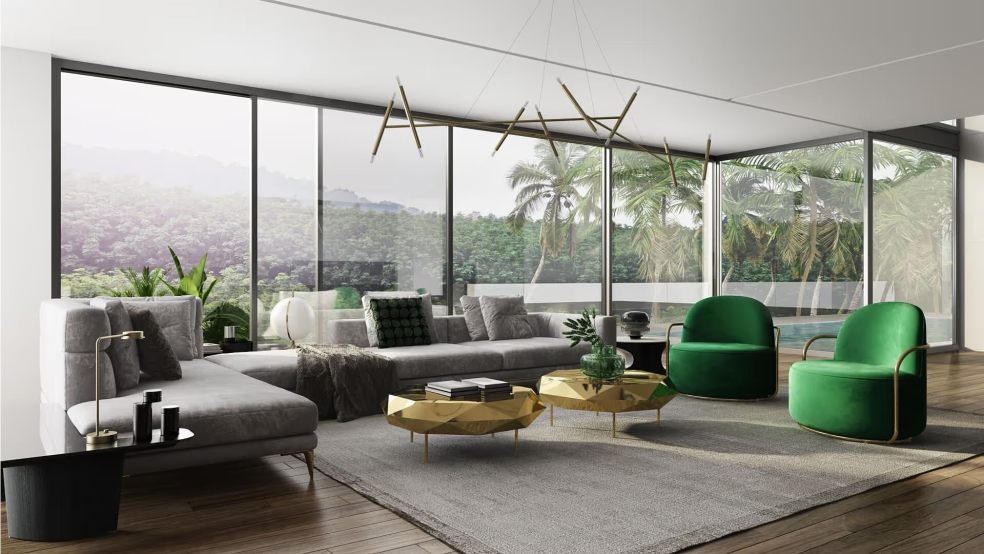
How 3D Rendering Services Are Changing Home Design Forever
The way we imagine, design, and decorate our homes has changed more in the last decade than in the previous fifty years. What used to begin with sketches, fabric swatches, and guesswork now starts with stunningly realistic digital imagery. Whether you’re an architect, an interior designer, or simply someone redecorating their living room, 3D rendering services have become the bridge between imagination and reality.
This revolution isn’t just about technology — it’s about empowerment. Homeowners can now see their dream spaces before spending a single pound, while designers can showcase ideas with breathtaking precision. Let’s explore how photorealistic rendering is reshaping the lifestyle and design landscape in the UK and beyond.
1. The End of Design Guesswork
Remember the days of squinting at mood boards and trying to picture how a new sofa or paint colour would look in your home? Those days are fading fast. Thanks to 3D rendering services like CGIFurniture, clients no longer have to rely on imagination alone.
Modern rendering transforms design concepts into detailed, lifelike visuals that capture every texture, reflection, and shadow. You can walk through a digital version of your home, explore the interplay of light at different times of day, and even rearrange furniture virtually before you commit.
The result? Total confidence. You know what you’re getting, and designers can fine-tune details based on your exact taste.
2. From Sketch to Reality — Instantly
The beauty of modern 3D visualization is how seamlessly it integrates into the creative process. An interior designer can take a floor plan, add furniture models, materials, and lighting — and within days, produce images that look like photographs of a finished space.
Imagine being able to compare two versions of your living room: one with sleek Scandinavian minimalism, the other with warm mid-century accents. Or testing whether deep emerald walls make your dining area feel intimate or too dark. With 3D rendering, these experiments cost nothing but time — and can prevent expensive mistakes during renovation.
For many UK homeowners embarking on kitchen remodels or open-plan conversions, this clarity is invaluable.
3. Elevating the Work of Interior Designers
Designers are storytellers — but even the best story needs visuals. Photorealistic rendering has become an essential storytelling tool in interior design presentations.
Professionals who use 3D visuals find their clients engage more deeply and make faster decisions. Instead of relying on samples or technical plans, designers can present an emotional experience — a finished vision that feels real and personal.
Some studios even use animations and 360-degree panoramas, allowing clients to “walk” through virtual rooms or see how sunlight changes a space throughout the day. It’s immersive, persuasive, and deeply human.
4. 3D Rendering and the Rise of Online Furniture Shopping
The influence of 3D doesn’t stop at interior design — it’s transforming how we shop for furniture. When online stores display photorealistic 3D images instead of traditional photography, customers enjoy a richer, more interactive experience.
With 3D rendering services, brands can show every detail — fabrics, stitching, metal finishes — without the cost and logistics of physical photoshoots. Retailers can even offer configurators that let shoppers customise colours, materials, and layouts in real time.
Companies like CGIFurniture specialise in creating these lifelike visuals for global furniture brands, helping e-commerce stores build trust and boost conversions. In an era where online shopping dominates, high-quality imagery is the new showroom.
5. Sustainability Meets Virtual Design
Beyond aesthetics and marketing, rendering has an environmental upside. Traditional photoshoots require building full-scale sets, transporting products, and generating significant waste. Virtual production eliminates all that.
A furniture brand can visualise dozens of product variations — finishes, fabrics, layouts — without manufacturing a single prototype. For homeowners, 3D tools prevent unnecessary purchases or redecoration missteps. You can “try out” a look digitally before ordering materials, reducing returns and landfill waste.
In short, 3D design isn’t just convenient — it’s sustainable. It supports the eco-conscious lifestyle that modern consumers increasingly demand.
6. The Emotional Side of Visualization
One of the reasons rendering has captured the imagination of lifestyle enthusiasts is its emotional power. A high-quality render doesn’t just show what a room looks like; it shows how it feels.
Warm morning light falling across a kitchen island, reflections on polished marble, the soft glow of a lamp in a reading nook — these are details that evoke mood and atmosphere. They allow clients to connect with a space on a personal level, long before it’s built.
Design psychology studies have shown that people make stronger and faster decisions when they can visualise emotional outcomes. That’s why real estate developers, interior designers, and even property agents rely on 3D imagery — it creates an instant sense of “home.”
7. Virtual Reality and Interactive Experiences
The next step in this evolution is interactivity. 3D renderings are now being paired with virtual and augmented reality tools that allow users to explore a space as if they were physically there.
Imagine putting on a VR headset and walking through your yet-to-be-built penthouse, or using your phone’s camera to project a new sofa into your real living room. These immersive experiences are becoming accessible even to individual homeowners, thanks to the latest rendering software and mobile technology.
For professionals, it’s a powerful way to present concepts. For clients, it’s pure magic.
8. Why Photorealism Matters
Not all renders are created equal. The difference between an amateur 3D image and a professional render can be the difference between curiosity and conviction.
Photorealism — achieved through expert lighting, perspective, and texture mapping — is what makes a rendering believable. It’s what convinces a client that a digital room could exist right now, just beyond their screen.
Companies offering premium 3D rendering services combine artistry with technical mastery. Their teams of 3D artists, architects, and stylists study real materials, photography principles, and human perception to produce visuals that stand shoulder-to-shoulder with reality.
When done right, viewers can’t tell the difference between a render and a photograph — and that’s the ultimate compliment.
9. A Creative Tool for Everyone
While rendering once belonged exclusively to architects and product designers, today it’s democratized. Online tools and affordable professional services make it possible for small studios, freelancers, and even homeowners to visualise ideas at a professional level.
Want to see how a Victorian terrace could look with modern skylights? Or test whether biophilic design suits your new home office? You no longer need to guess. You can design, refine, and dream digitally.
For influencers and content creators, 3D imagery also provides new storytelling possibilities — from virtual room makeovers to visual concept boards for partnerships. The aesthetic quality rivals magazine photography but at a fraction of the cost.
10. The Future of Living, Visualized
As our lives become more digital, the line between imagination and execution continues to blur. Soon, 3D rendering will be as routine in home design as floor plans or paint samples.
Artificial intelligence is accelerating this shift: automatic scene generation, material detection, and smart lighting simulations will make visualization faster and even more accessible. Yet, the human eye — the creative touch — will remain essential.
Ultimately, 3D rendering services empower us to make better, more inspired choices about the spaces we live in. They turn the abstract into the tangible, helping us design homes that not only look good but feel right.
Final Thoughts
Home is more than walls and furniture — it’s an expression of who we are. The digital tools shaping modern interiors allow us to design with confidence, sustainability, and artistry.
Whether you’re a designer presenting your next concept, a homeowner exploring a renovation, or a brand redefining your online presence, 3D visualization has changed the rules forever.
With the help of expert studios like CGIFurniture, the future of home design is no longer hidden behind blueprints — it’s right in front of our eyes.













